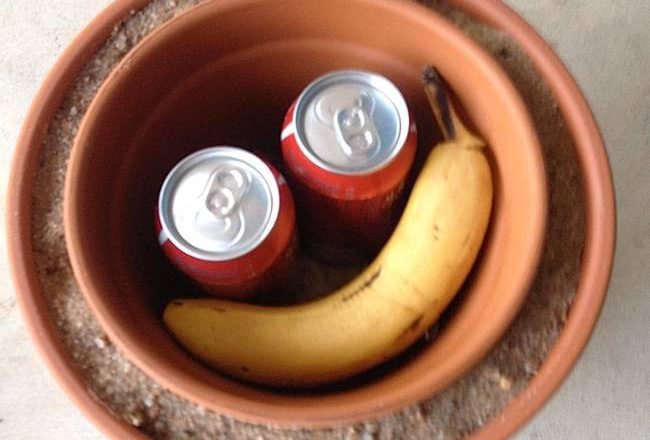
Instructions at Instructables
Question from Holly
Hi Debra,
Thanks so much for helping me become such a conscious consumer. Your work and advice is really appreciated!
I am on the hunt for a great cooler that will keep our stuff cold for a couple of days. After lots of research of the likes of Pelican, Yeti, and Bison, I came to realize that the stuff that keeps the ice frozen for so long is polyurethane foam insulation! This worried me, but THEN I found out that’s what is in our fridges.
Is this safe? The coolers are listed as having polypropylene shells (I am assuming that is the same plastic used for fridges) – does polypropelyne do a good job of containing VOCs within the walls of the cooler or fridge?
Also, Pelican soft coolers are made with double-coated 840D TPU; Yeti soft coolers are made of ColdCell™ foam insulation with EVA foam bottom – what are your thoughts on this regarding being so close to food etc.?
I’d love your input on this because I have done exhaustive research and can’t seem to find out anything!
Thanks.
Debra’s Answer
First of all, polyurethane foam isn’t a problem in coolers and refrigerators because it’s enclosed. As long as it’s sealed up inside something else, the fumes won’t get through.
The polypropylene shell is also fine. Polypropylene is one of the least toxic plastics. It’s used to make food storage containers. So I’m not really worried about that.
Now you asked if polypropylene would block VOCs. Great question. Here’s an interesting paper called Guidance on the Use of Plastic Membranes as VOC Vapor Barriers. But in a cooler you’re talking about a thick piece of plastic, not a membrane. That think piece would certainly block the VOCs.
Again, with refrigerators, the plastic would be thick enough to block VOCs. Here are the plastics used on the inside of your refrigerator:
Tough, impact- and corrosion-resistant plastics such as ABS, high impact polystyrene and polypropylene are used to create molded interior panels and door liners that help maximize usable space. Molded-in color means there is no paint or coating to peel over time. These panels are also moisture resistant, which helps them repel spills and stains. For clear drawers and compartment doors, polystyrene, polycarbonate and acrylic are the resins of choice, with durable polycarbonate often chosen for frequently used doors and compartments.
Thanks for asking this question. I didn’t know polycarbonate was used to make those crisper drawers. That’s the plastic with BPA.
TPU and EVA are both pretty nontoxic plastics. I’m not concerned about them.
As long and we’re on the subject, here are some links for insulating bags.
Here is a link to one similar to one I use and love. It has no outgassing. It’s a foil-lined cloth bag I purchased at my local natural food store.
www.ebay.com/itm/Insulated-Reusable-Grocery-Bag-Our-best-seller-2-pack-BLUE-CMW-/112471869875
You could use several inside each other for more insulation.
Also look at this cooler bag:
www.debralynndadd.com/debras-list/pack-cooler-bags
And here’s an article about how to keep your food cool without electricity:
www.treehugger.com/kitchen-design/fifty-buck-fridge-keeps-your-food-cool-without-electricity.html
Readers, what do you use to keep your food cold?




You wrote: I didn’t know polycarbonate was used to make those crisper drawers. That’s the plastic with BPA.
What is the best way to store food in these drawers to keep it safe? Can it be in BPA-free plastic bags, or need to be in glass containers? Thank you!
The problem here is contact between the food and the plastic. So simply lining your crisper drawer with something would probably be enough. I put my lettuce in organic cotton Vejibags, but most of my produce I store in glass containers with silicone lids< /a> because it stays fresher and crisper than putting it in the crisper